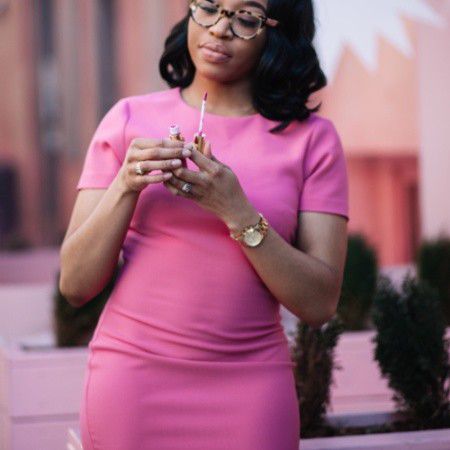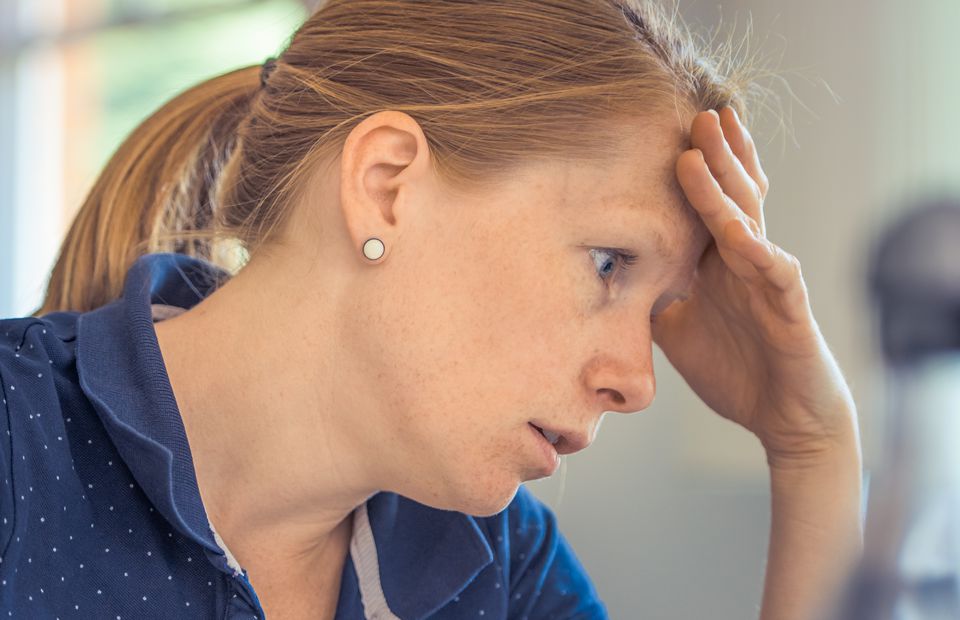Just like a lot of folks, nine out of ten of my days start and end with me scrolling the ‘gram.
It's kind of alarming (that I spend hours upon hours fooling around on social media when there are a zillion other things I could and probably should be doing), I know, but hey, it’s the truth. And while I used to beat myself up over how attached I am to my feed, I’ve since realized
being an active Instagrammer isn’t necessarily
a “bad” or shameful thing.
For one, as a former beauty/fashion/lifestyle editor-turned-strategic marketing consultant, monitoring IG for news and shifts in industry trends can be obviously great for business. Two, in my experience, if you focus less on the glitzy, glamorous, and (dare I say) vainglorious side of Insta, it can also help spark some much-needed personal growth.
True story. Hear me out.
Editor's Note: This article was originally published pre-Covid.
How I Got Started on the 100-Day Self-Care Challenge
Late last year, a follower/former colleague/friend of mine encouraged me to start and finish a viral “
100 Days of Self-Care” challenge—the same challenge she had recently completed herself. Picking up the proverbial baton, I decided it was important that I too get disciplined and intentional about treating myself kindly—which I discovered goes way beyond ordering guilt-free takeout and slapping on a face mask.
So, for 100 days, I chose to remain completely transparent—documenting my entire journey through IG Stories.
To many, posting intimate details about your life online and for virtually anyone (including employers, ex-partners, childhood buddies, total strangers, etc.) to see is pretty gutsy. To me, sharing is, well, caring. Because, let’s be real here, everyone faces similar struggles. Whether those struggles be bigger—
battling impostor syndrome and
advocating for yourself at work, or smaller—remembering to drink enough water—I promise you’re not alone.
Without further ado, here’s what happened and (most importantly) what I learned.
Entrepreneurship is a dream for many. As someone who grew weary of Corporate America and took the leap to figure things out solo-dolo, I get why. But starting out, what I didn’t quite get was this: regardless of how glamorous it may seem, working for yourself, on your own terms
takes a ton of accountability—let alone discipline—to survive.
Without a plan or the oomph to pivot fast, you’ll fail. *crickets* It sounds tough because it is tough. That’s just the reality all entrepreneurs face once they decide to deviate from their norm. For me, taking control of my marketing career after starting in media meant understanding (1) the full scope of my needs and (2) my long-term goals as a consultant.
Ultimately, just like everyone else, I need to pay bills (a.k.a., my first priority). Secondly, my main goal is to one day soon join the ranks of those I consult by launching my own successful beauty business. Thus, doing the grunt work to
restructure my rates (and add late fees, because getting paid on time isn’t always a given when you’re an independent contractor) as well
perfect my pitch to win over new brands I can continue learning from was crucial.
To help me out on both fronts, step one involved revisiting a book I purchased on a whim a few years ago called,
My So-Called Freelance Life: How to Survive and Thrive as a Creative Professional for Hire by Michelle Goodman. While I didn’t know back then how clutch it’d be, today, almost every page is highlighted or marked with a sticky note. With each chapter, Goodman sandwiches tip after tip in between relatable, albeit hilarious anecdotes about her journey—all of which made ya girl feel less alone.
If you need convincing, reading chapter six changed my life. About half-way through,
me and my impostor syndrome had a “come to Jesus” moment when I finally decided I’d no longer charge clients the bare minimum. Up until then, I was playing myself every month by solely accounting for my expenses. Despite struggling at times, I didn’t demand enough to live because I felt strangely inadequate and fearful of rejection—even though I have a strong repertoire and am armed with results from past experiences. Now, I don’t think twice about turning down opportunities that aren’t the right fit.
Step two included
chatting with other consultants about their strategies and setbacks. Although it can be scary to shamelessly pick another person’s brain, getting out of my own head to be transparent and ask key questions has been invaluable.
Besides saving to pay my bills, I often have an irrational desire to spend, spend, spend. Quite honestly, it doesn’t make sense how fast I can blow a check on silly things — many of which I buy in the name of “self-care.” The irony is that all this spending only triggers my anxiety, making me feel worse. Sigh.
Following
Tiffany Aliche, a.k.a. The Budgetnista's, lead and taking a deep dive into my bank statements, I decided to regain a sense of control by
fine-tuning my finances. Given that I’ve got some looming credit card debt, I ditched the notion of saving just to save and decided to make
paying my balance down as “fun” as possible.
Rooted in the idea of creating another purpose-driven savings goal I’d stick to, I devised a hack requiring me to set aside the dollar equivalent of each challenge day. Doing so would’ve resulted in a sum of $5,050 to put towards my account once completed. I can’t lie—I started out SUPER strong, but given how unpredictable life can get with its random expenses, I didn’t quite hit the mark I wanted. Still, with mindfulness and a little sacrifice, I was successful in contributing over $2,000. Woot woot!
I must note, in my case, sacrifice didn’t mean cutting out everything at once. Going cold turkey would’ve been unbearable, and I probably would’ve quit on day 30 (LOL). Looking back, allowing for splurges here and there made them feel more like the rewards they’re intended to be—rather than guilty purchases I’d soon regret.
Consistently
working from home has its perks. I don’t have to put on actual clothes, wait in line for coffee, rush to catch the train (New York City commuter problems), or deal with gossipy colleagues who insist on sharing their weekend recaps. However, being indoors 24/7 and away from people has its downsides too.
For starters, while on this challenge, I noticed I haven’t always paid close enough attention to my nutrition. Besides choosing sugary drinks over water, I’ve been known to snack on processed foods vs. cooking balanced meals. As a result, after taking a trip to my primary care physician, I learned I lack adequate amounts of iron, fiber, and vitamin D. As a matter of fact, I’m extremely vitamin D deficient, which I was told is likely because I don’t
absorb enough outside sunshine.
To give my body a boost, I grabbed a few doctor-approved supplements and committed myself to taking them as instructed. I also cut back on ordering takeout through food-delivery apps and instead made the switch to getting food from my local grocer at least once a week. Not only is my wallet happier, but my insides also seem pretty thankful for these adjustments.
Another thing I worked really hard on during the past four months was my
skincare routine. As someone who has been battling stubborn acne for nearly 10 years, I’m aware the occasional visit to an esthetician will never trump the consistent care I can and should be providing myself at home. So, what did I do to achieve a bump, hyperpigmentation-free complexion? A few things:
- I kept my hands off my face, which meant absolutely no picking at breakouts.
- I mixed budget-friendly skin-care staples, like this cleanser and this toner, with investment-worthy finds, like this serum and this resurfacing peel, and kept at it. Day and night, as appropriate. (Pssst! If you want my full routine, find my email or social handle below!)
- I wore a vitamin C serum and sunscreen religiously.
- I tried not to stress about making progress. Stress triggers the production of cortisol, which is said to then trigger your oil glands to make more oil, which then mixes with dead skin cells and causes blemishes. Yuck!
Physical health and well-being aside, I found it important to make my mental health the highest priority. Not getting to interact with many individuals on a daily basis really put a damper on my mood and ability to stay creative. Remaining in total isolation for extended periods of time is literally torture. And trust me, that type of torture only gets worse during winter when disorders like
seasonal depression hit the hardest.
The biggest thing, though, was gently reminding myself through daily affirmations that I’m smart, talented, and a masterpiece in progress.
People make time for who and what they want, right? Eh, yes. But in my book, it seemed way deeper than that. Before this challenge, I’d try realllllly hard, but somehow just couldn’t find time with multiple clients and everything else on my plate.
Learning to say “no” to stuff demanding more energy than I can temporarily offer helped me avoid taking on too much. And after a while, not taking on too much allowed me to revisit my approach towards truly nurturing my close relationships. Doing things like starting each day with family check-ins over getting lost in my inbox, or offering to meet up with friends outside the house over hitting an unrealistic deadline became routine. Simply put, author
Mark Manson calls it “the subtle art of not giving a f*ck” (in his book of the same name)—which, when practiced, makes work-life balance a non-negotiable and
burnout a choice.
If you’re feeling inspired to take on the
100 Days of Self-Care challenge, here’s how you can get started:
- First, clear some space on your favorite note-taking app. If you like to write, find an unused journal as a replacement.
- Then, make a list of all the ways you could use some additional self-care (physical, psychological, emotional, spiritual, professional, etc.). Not sure what to include? We’ve put together this handy guide to spark your creativity!
- Next, assign yourself an accountability partner to check in on your progress. And while you’re at it, encourage them to take up the challenge too!
- Finally, take to Instagram and share your progress and what you’ve learned. (P.S. It’s perfectly okay if you want to keep this experience private—do you, boo!)

















